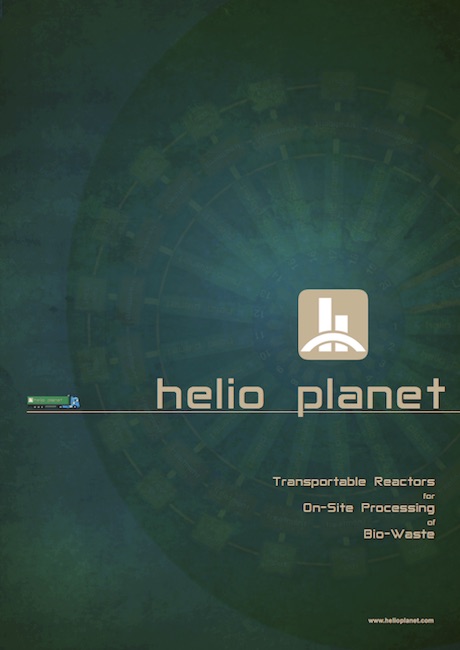faq
helio PLANET
frequently asked questions
frequently asked questions
Our experience spans over 30 years with the same team of professionals now involved with the 'Third Generation' of the highly successful LTNE thermal processing reactor. Additionally Helio Planet has 'Patent Candidate' technology that mimics nature in the conversion of useless wastes into reusable bio-products (commodities) that are of value, in demand, energy efficient and environmentally friendly.
Helio Planet has developed a global Business Model for the roll-out of the transportable 'Low Temperature Natural Extraction' (LTNE) technology. This Business Model places Helio Planet as a major global service provider for the management and processing of bio-waste (i.e. green waste, municipal solid waste, sludges, tyres, plastics, market waste, agricultural waste, abattoir waste, industrial waste, etc.). The manufactured bio-products, from the reactor, of Bio-Char, Bio-Gas and Bio-Oil can be used in a multitude of ways with a viable economic benefit for the local operator. The package that Helio Planet offers, to waste owners, is a complete turnkey service to manage and dispose of their organic wastes and sludges. Please contact us to find out more!
ADDaDOT™ is a Helio Planet global initiative to effectively and economically eradicate harmful local
community waste while reclaiming valuable resources for the betterment of those local communities
and our planet. This global program monitors and provides progress reports on all installed Helio
Reactor Units (HRU). The website is updated in real-time with major operational and environmental indicators.
With the addition of HRUs local communities will benefit in a multitude of ways:
- remove their local waste effectively (no landfill)
- produce commodities to on-sell (economics)
- generate electricity (no grid necessary)
- produce bio-char for soil remediation (fertiliser base)
- create NO EMISSIONS (great for the environment)
Bio-Char is a man-made charcoal used as the basis of very stable fertiliser. Bio-Char combined with other organic materials can create rich soil that lasts for centuries. In addition Bio-Char is porous, so it retains water, keeping soil moist. Carbon is mineralised in the LTNE thermal process and is thereby retained in soil (carbon sequestration), and not released into the atmosphere. Bio-Char is used as a fertiliser base, reducing the use of nitrogen fertilisers, which emit Nitrous Oxide. In another unique way the Bio-Char has been successfully used as an aggregate raw material in a loam and clay mixture to produce high heat insulating bricks with fine pores. Other uses for Bio-Char, within the building materials sector, are asphalt, concrete, ceramics, aggregate/slag and cement. Bio-Char is considered a ‘Green’ alternative to coal for firing boilers, kilns, incinerators and other direct combustion devices offsite. It is also an absorbent, as an alternative to activated carbon, in filters and other clean-up systems. In many cases it can be used as a reductant (as well as a fuel) in metallurgical processes.
The local manufacturing of Bio-Gas is the main energy source that sustains the LTNE process without requiring any other external energy. Bio-Gas is also a component in the production of synthetic fuels and chemicals. It is created by gasification and is composed of carbon monoxide and hydrogen. It is considered as a ‘Green Fuel’ for drying the incoming LTNE waste feedstock and heating the conversion reactor or for on-site use to create steam and/or electricity. Bio-Gas is an alternative energy source to coal for heating buildings and as a component of a host of cleaner fuels for transportation. As a Renewable Energy, Bio-Gas can generate electricity to feed into the electricity grid or charge up batteries. Additional benefits are gained as Bio-Gas can be used to create synthetic natural gas, ammonia, methanol, and synthetic petroleum fuel (dimethyl ether–synthesised gasoline and diesel fuel). The hydrogen in Bio-Gas can be used to power fuel cells or to propel fuel cell electric vehicles.
The LTNE process creates a crude oil substitute (Bio-Oil) that can be used to make plastic and has attracted considerable research attention because of its huge potential as a substitute for conventional fuels. Bio-oil obtained by the pyrolysis of lignocellulosic biomass contains a range of chemicals, such as acids (e.g. acetic acid), anhydrosugars (e.g. levoglucosan), furanics (e.g. furan, furfural), phenolics (e.g. guaiacol), aldehydes, and ketones. These bio-based chemicals and bio-based fuels are potential alternatives to petroleum-based chemicals and fuels, such as gasoline, diesel or jet fuel, but need to be up-graded by removing oxygen before they can find widespread use.
Wood Vinegar, also called pyroligneous acid, liquid smoke or mokusaku, is a dark liquid produced through the natural act of carbonisation, which occurs when biomass is heated in our LTNE process during the bio-char production. The exhaust smoke from this process is condensed into a liquid which separates into tar, vinegar and bio-oil. Wood vinegar contains more than 200 elements such as acetic acid, methanol, phenol, ester, acetals, ketone, formic acid and many others that work synergistically together. It has being used extensively throughout Asia for several decades for the replacement of synthetic chemicals.
The benefits of wood vinegar for agriculture, animal husbandry, and human use are too numerous to list here but there is an enormous impact on the future growth in food production (improved seed germination strike rate) while reducing dependance on chemicals used in agriculture (a possible reduction of up to 50% use of fertilisers, herbicides and pesticides).
There is no such thing as 'safe disposal' of sludge. If landfilled, it will contaminate the groundwater. If incinerated, it will cause serious air pollution. When dumped in the ocean (sea-fill), it will cause great harm to marine ecology. And "land application," the latest disposal tactic, may be the most insidiously dangerous of all. Helio Planet's LTNE technology can now safely process sludges and produce commodities for sale.
Helio Planet's major customers are the private or public waste owners around the world. These entities generate, or are responsible for, the excessive waste that is currently disposed primarily via landfill, sea-fill, incineration and application to agricultural land. The industry as a whole is experiencing major problems with waste disposal and there is general public opposition to landfill and incineration. 'Not-In-My-Back-Yard' (NIMBY) is a growing social sentiment around the world. With the exception of the Municipal Solid Waste (MSW) market, sludges are the biggest single source of waste input feedstock for the LTNE process.
The growth drivers for Helio Planet's products and services pivot around ‘FOOD’ and ‘ENERGY’. With the steady, alarming growth in global population there is a continuously rising demand for both food and energy. Rising energy costs, depletion of energy resources and environmental regulation place Helio Planet’s products on centre stage of the Global market place.

'another dot...another HRU...less waste'


